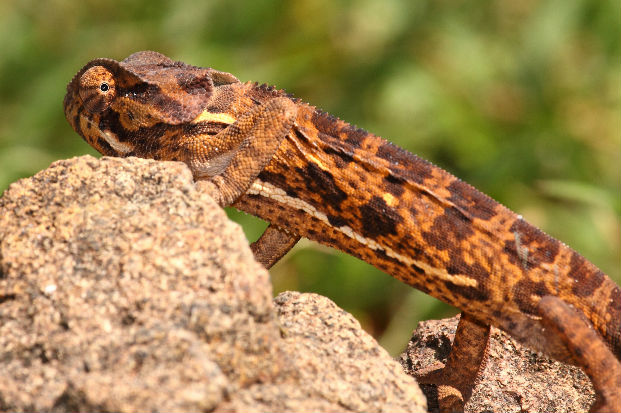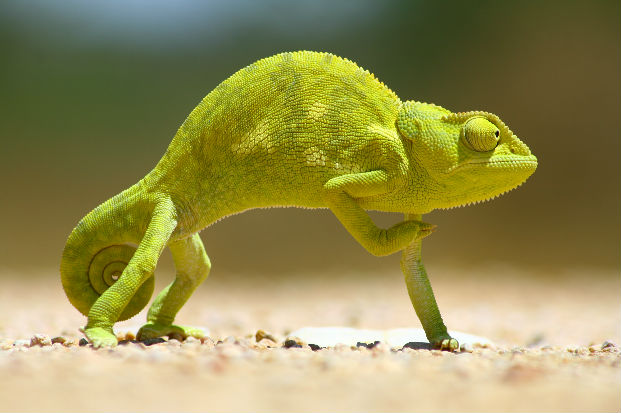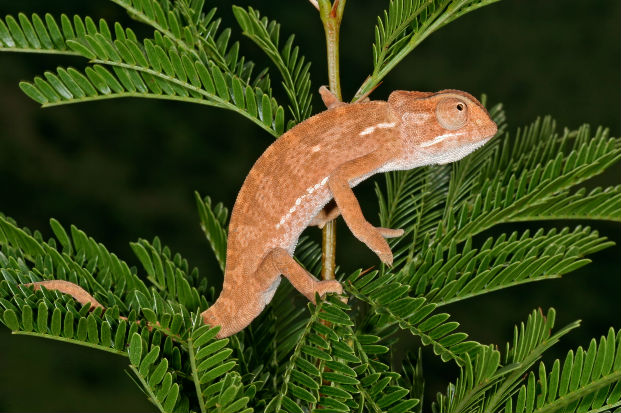There are over 150 chameleons around the world but the majority of them can be found in Africa and Madagascar. There are at least 18 species in southern Africa, one species can be found in the lowveld, the flap-necked chameleon which reaches 20 cm in length. These reptiles which are closely related to Agamas have a projectile tongue, independently rotating cone shaped eyes and, they are famous for their ability to change colour to suit their mood, surroundings and the temperature.
Vote for the fact you find most fascinating
Chameleons use their tail to aid their balance when walking along branches. This prehensile tail can also be used as a fifth limb to grip to branches.
A chameleon walks extremely slowly as if staggering. This rocking back and forth motion is designed to avoid detection as it appears as if it is simply a leaf swaying in the wind.
Chameleons are able to change their colour due to nerves that are stimulated by what they see. This causes pigments called melanophores to darken the skin and at the same time obscures the bright yellow and red pigments known as chromotophores.
The word chameleon is derived from the Greek, khamai, meaning “on the ground” or “dwarf” and leon meaning “lion”. Chameleon therefore translates as “dwarf lion”. This is said to be due to its ferocious behaviour.
Muscular contractions shoot the chameleons tongue forward at 15 metres per second over a considerable distance to grasp its prey on the sticky tip.
To maximise its field of vision the chameleon can move its eyes independently of one another so that it can look in front and behind at the same.
Chameleons have no upper or lower eyelids. Instead they have one cone shaped eyelid that leaves a gap large enough to expose the pupil.
When basking in the early morning winter sun a chameleon may turn very dark to better absorb the heat from the sun. It further maximises the opportunity by turning broadside to the sun and flattening its body against the sand or rock.







